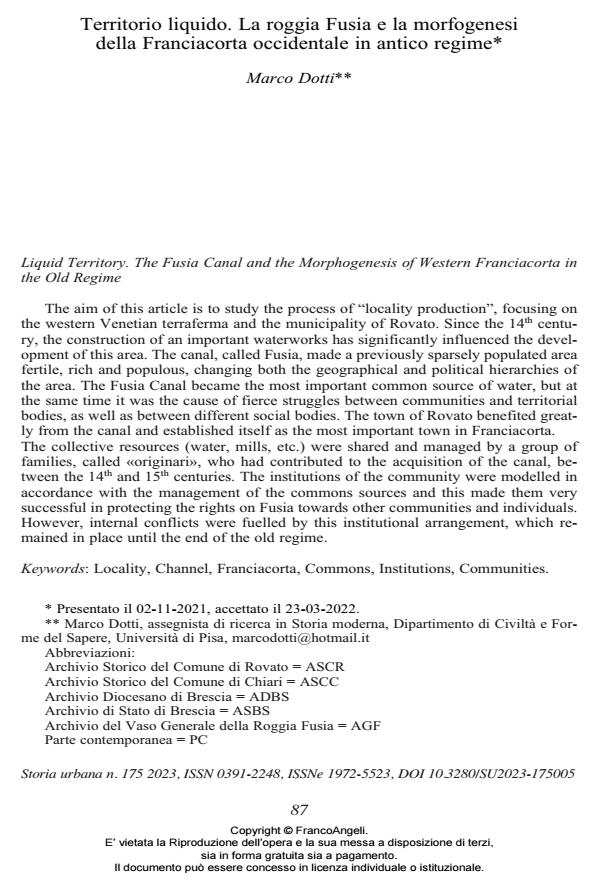Liquid Territory. The Fusia Canal and the Morphogenesis of Western Franciacorta in the Old Regime
Journal title STORIA URBANA
Author/s Marco Dotti
Publishing Year 2024 Issue 2023/175
Language Italian Pages 26 P. 87-112 File size 463 KB
DOI 10.3280/SU2023-175005
DOI is like a bar code for intellectual property: to have more infomation
click here
Below, you can see the article first page
If you want to buy this article in PDF format, you can do it, following the instructions to buy download credits

FrancoAngeli is member of Publishers International Linking Association, Inc (PILA), a not-for-profit association which run the CrossRef service enabling links to and from online scholarly content.
The aim of this article is to study the process of “locality production”, focusing on the western Venetian terraferma and the municipality of Rovato. Since the 14th centu- ry, the construction of an important waterworks has significantly influenced the devel- opment of this area. The canal, called Fusia, made a previously sparsely populated area fertile, rich and populous, changing both the geographical and political hierarchies of the area. The Fusia Canal became the most important common source of water, but at the same time it was the cause of fierce struggles between communities and territorial bodies, as well as between different social bodies. The town of Rovato benefited great- ly from the canal and established itself as the most important town in Franciacorta. The collective resources (water, mills, etc.) were shared and managed by a group of families, called «originari», who had contributed to the acquisition of the canal, be- tween the 14th and 15th centuries. The institutions of the community were modelled in accordance with the management of the commons sources and this made them very successful in protecting the rights on Fusia towards other communities and individuals. However, internal conflicts were fuelled by this institutional arrangement, which re- mained in place until the end of the old regime.
Keywords: Locality, Channel, Franciacorta, Commons, Institutions, Communities.
Marco Dotti, Territorio liquido. La roggia Fusia e la morfogenesi della Franciacorta occidentale in antico regime in "STORIA URBANA " 175/2023, pp 87-112, DOI: 10.3280/SU2023-175005